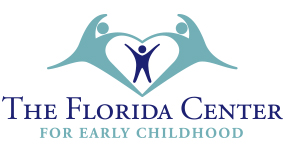What is Autism?
You make have been hearing a lot about Autism this month, or have seen a lot of people wearing blue. April is Autism Awareness Month, but there is still much to learn about Autism and children living with autism.
So, what is autism?
Autism can affect any child or adult, regardless of income, race, or background. Autism refers to a range of conditions characterized by challenges with social skills, repetitive behaviors, speech, and nonverbal communication, as well as by unique strengths and differences. This is why it is often referred to as the Autism Spectrum. While there is still much to learn about Autism, the spectrum helps parents, educators, therapists, doctors and law makers understand that there is a wide range of behaviors, and the cause hasn’t yet been pinpointed. Children can be diagnosed as early as 18 months, with the most obvious signs, lack of eye contact and verbal communication, being between 2 and 3 years. The latest numbers show that one in 68 children are on the Autism spectrum, showing an increased need for understanding and additional support and interventions, depending on the child, like those offered at The Florida Center.
- An estimated 50,000 teens with autism become adults – and lose school-based autism services – each year.
- Around one third of people with autism remain nonverbal.
- Around one third of people with autism have an intellectual disability.
- Certain medical and mental health issues frequently accompany autism. They include gastrointestinal (GI) disorders, seizures, sleep disturbances, attention deficit and hyperactivity disorder (ADHD), anxiety and phobias.
Possible signs of Autism in Infants:
- By 6 months, no social smiles or other warm, joyful expressions directed at people
- By 6 months, limited or no eye contact
- By 9 months, no sharing of vocal sounds, smiles or other nonverbal communication
- By 12 months, no babbling
- By 12 months, no use of gestures to communicate (e.g. pointing, reaching, waving etc.)
- By 12 months, no response to name when called
- By 16 months, no words
- By 24 months, no meaningful, two-word phrases
- Any loss of any previously acquired speech, babbling or social skills
Possible signs of Autism at any age:
- Avoids eye contact and prefers to be alone
- Struggles with understanding other people’s feelings
- Remains nonverbal or has delayed language development
- Repeats words or phrases over and over (echolalia)
- Gets upset by minor changes in routine or surroundings
- Has highly restricted interests
- Performs repetitive behaviors such as flapping, rocking or spinning
- Has unusual and often intense reactions to sounds, smells, tastes, textures, lights and/or colors(Source: Autism Speaks)
